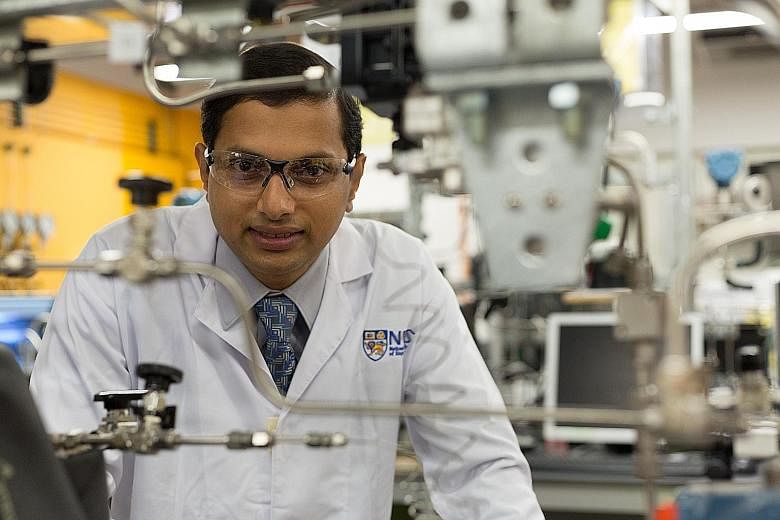We are halfway through 2017, and electricity tariffs have already increased twice. The price rose by 5.7 per cent for the period of January to March, compared with the last quarter of 2016. It went up another 6.1 per cent for April to June.
The driving force behind the increases is none other than the price of natural gas, a fuel that we import to supply about 95 per cent of our electricity.
Natural gas is the cleanest burning fossil fuel that produces less carbon emission and pollutants than coal or oil, and meets stringent environmental norms. Its prices fluctuate because it is tied to oil prices by commercial contracts, which in turn, depend on global market conditions.
Unlike other cosmopolitan cities, Singapore does not have the luxury of tapping into hydroelectric, nuclear or coal power generation as we do not have such resources. While Singapore gets plenty of sunlight, and has made significant advances in recent years to tap into solar energy to generate power, natural gas is likely to remain the main source of power generation.
Because of its abundance due to the shale gas boom, natural gas can cater to the huge energy demands from industrial, commercial and household users. Natural gas is also abundantly available in nature in the form natural gas hydrates.
Singapore has been importing natural gas from Malaysia and Indonesia through pipelines since the early 1990s for electricity generation and industrial feedstock. From May 2013, the nation also started to import liquefied natural gas (LNG) as a means to diversify and secure its energy sources.
LNG is the product of natural gas which has been condensed into liquid form at close to atmospheric pressure by cooling it to about minus 162 deg C. LNG takes up about 1/600th the volume of natural gas in its gaseous state, making it easy to transport.
-
About the writer
-
Associate Professor Praveen Linga, 38, is from the Department of Chemical and Biomolecular Engineering. He is also the co-lead for natural gas research at the Centre for Energy Research and Technology. Both are part of the National University of Singapore's Faculty of Engineering.
His research interests are in the areas of gas hydrates, storage and transport of fuels, carbon dioxide capture, storage and utilisation, sea water desalination and recovery of energy.
In April, Prof Linga was conferred the Young Researcher Award by NUS at its annual University Awards.
To generate electricity, LNG needs to be converted back to natural gas. In Singapore, sea water is at present used to re-gasify LNG by warming it from minus 162 deg C to 20 deg C. During the conversion process, both the cold energy and the sea water are wasted as they are transported back to the ocean.
To put the amount of wastage in context - about 40 tonnes of sea water is needed to convert a tonne of LNG back into gas to be used for power generation. At the same time, one tonne of LNG cold energy can be used for 60 tonnes of refrigeration, which works out to freezing 60,000 litres of water at 0 deg C within 24 hours.
Given the amount of LNG that is converted to meet our electrical needs, there is indeed a lot of potential to develop cost-efficient approaches to harvest the cold energy and use sea water effectively.
At the National University of Singapore (NUS), our research is geared towards generating innovative technologies and solutions with translational impact for a sustainable future.
A part of my work at the Department of Chemical and Biomolecular Engineering and the Centre for Energy Research and Technology, both part of the NUS Faculty of Engineering, looks at ways to overcome challenges in converting and storing natural gas, with the goal of providing sustainable energy resources.
One of the technologies my team is developing is a novel, cost-effective way to store natural gas in a solid form known as solidified natural gas (SNG). It is seen as a promising replacement for LNG. Our work, conducted in collaboration with industry partner Lloyd's Register Global Technology Centre, utilises the cold energy that is removed from LNG to store natural gas in ice-like forms known as clathrate hydrates, commonly referred to as "gas hydrates".
The SNG we produce allows natural gas to be stored using 50 per cent less energy compared with storing it in a compressed form. There is potential to store up to 170 times more gas per unit volume in SNG form, compared with keeping natural gas in its gaseous form at atmospheric pressure and at moderate temperatures.
This method allows for SNG to be stored more easily in an extremely safe and non-explosive manner. SNG can be used as a backup fuel in the event of a natural gas supply disruption.
Another translational research project that my team champions is a technology to resolve the energy-water nexus, the two resources that are critical for Singapore. Working with industry partner Royal Dutch Shell, we have developed a prototype to produce purified water from sea water by harvesting the high quality cold energy produced by LNG re-gasification.
Our technology does not compete with the established reverse-osmosis process that Singapore now uses for producing potable water by desalinating sea water. Instead, we complement it by producing additional potable water. This can also provide Singapore with new business opportunities in the field of new desalination technologies and salt production.

